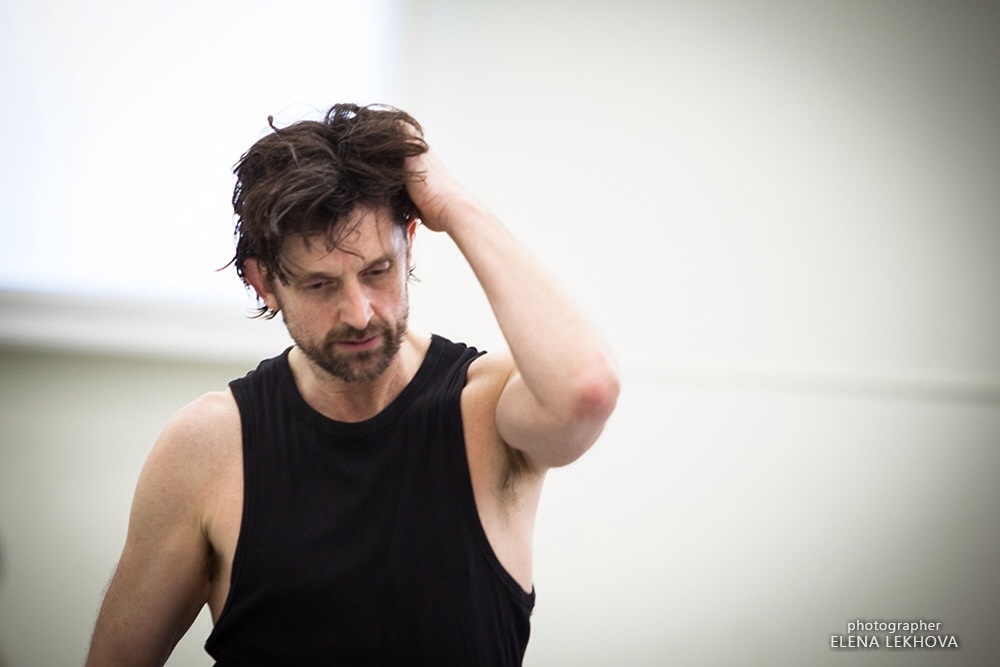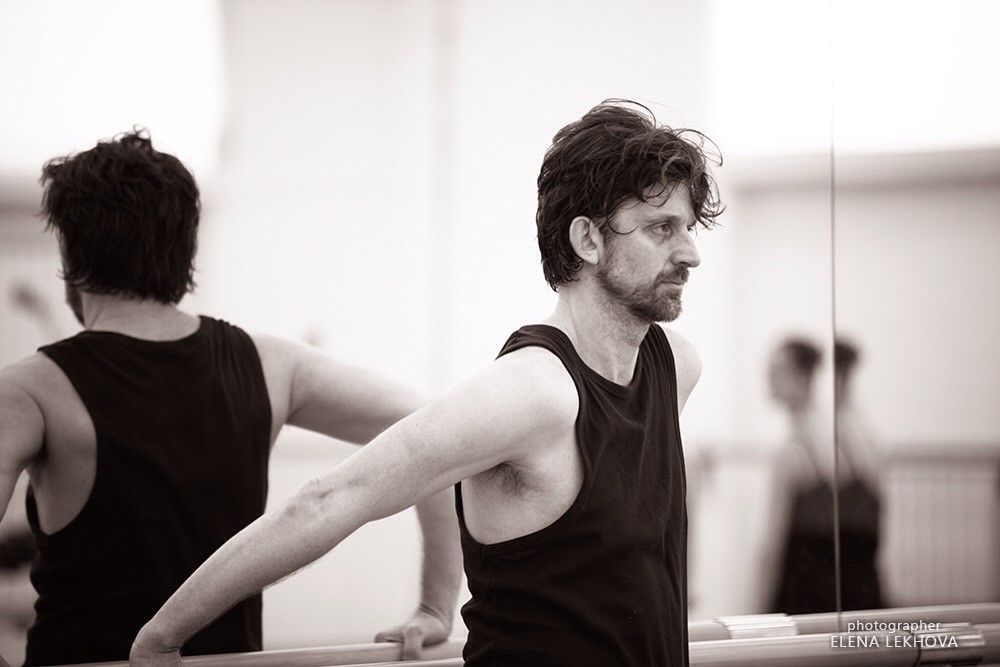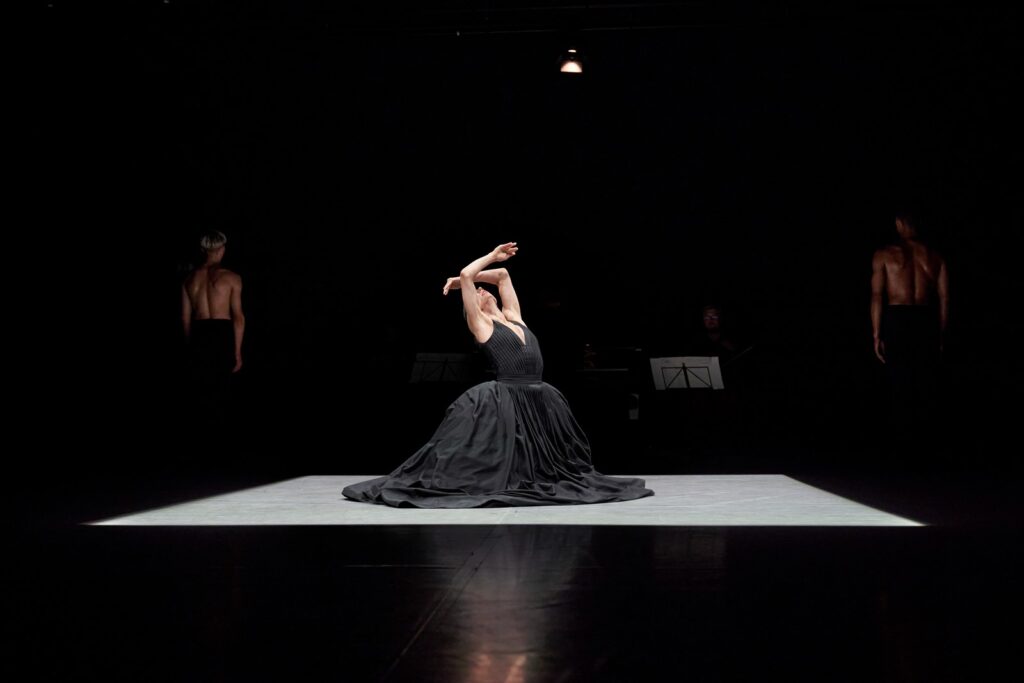Spotlight: Koreograf Paul Lightfoot om Selvportræt, dans i en coronatid og et friskt syn på branchen

Af Ida Spedtsberg
Det er ikke hvem som helst, jeg skal møde på en café på Vesterbro denne eftermiddag i august. Paul Lightfoot har nemlig sagt ja til et interview trods, hvad jeg forestiller mig må være en forholdsvis travl kalender. For den danske dansescene er endelig vågnet op til dåd efter et hårdt corona-år. Og siden maj har jeg, mine kolleger og en masse andre haft fornøjelsen af premierer, genopsættelser og kunst i lange baner. Og ikke mindst besøg fra udlandet. Heldigvis.
ET SELVPORTRÆT
Lightfoot kommer trillende på sin cykel på ægte dansk manér og bestiller urtete, mens vi snakker lidt om løst og fast. Man skulle næsten ikke tro, at her er tale om en verdenskendt koreograf, der indtil for blot et år siden stod i spidsen for et af de bedste moderne dansekompagnier i Europa. Nemlig Nederlands Dans Theater – bedre kendt som NDT. Lightfoot har en klassisk uddannelse fra the Royal Ballet School i London og en lang karriere hos Nederlands Dans Theater som både danser, koreograf og kunstnerisk leder. Samt en god bunke priser og andre udmærkelser.

Foto: Elena Lekhova
Med en solid britisk accent forklarer han, at det på ingen måde er hans første tur i København, og at han i denne omgang er her for at besøge venner og for at opsætte sit værk Selvportræt som en del af forestillingen Kammerballetten, der netop har spillet på Takkelloftet i Operaen (læs vores anmeldelse her). En forestilling han også arbejder på at få filmet. Og trods sygdom, restriktioner og en opdelt prøveperiode med et internationalt cast, så har det været en speciel oplevelse at se sit værk på scenen i en hverdag, hvor lockdown har betydet så meget for kunsten.
Jeg spørger ind til, hvordan det har været at se sit værk på en rigtig scene med et rigtigt publikum igen. Han fortæller:
Takkelloftet is a very small house. And the first evening was still only with 50 % audience. That changed literally the day after the premiere. You’re grateful for everything somehow. For me to see the final fruition of the work that we had spent a lot of time creating, because we began in March. I did 3 weeks and then we left it for May. Then we did 3 weeks more and then we put it to bed. And now we got it again. And that was fantastic, but I got quite itchy. “Uhh I wanna see it, I wanna see it”. So, when we got there, it was Christmas morning. It was a beautiful sensation. A little stiff at the premiere. It was harder with half an audience and… it’s funny how we alter in social environments. On the Friday, we were all sitting very much separated, and it felt like we were in church. Everyone behaved extremely quietly and politely and almost stiff. And it wasn’t because of the royal visit, it was because of the circumstances. But then Saturday was like “ahh, there we are”. So, I’ve been fortunate.
Og skal man tro anmeldere og publikum, så er Lightfoot ikke den eneste, der har været heldig at opleve Selvportræt på scenen. Der er nemlig ros og flotte ord hele vejen rundt.
”THE ARTIST IS ALWAYS IN EVERY WORK THEY DO”
Selvportræt er et 20 minutters værk danset af Sebastian Haynes, Maria Kochetkova og Toon Lobach. Oprindeligt inspireret af en kunstudstilling i Wien og som en forlængelse af værkerne Standby og Unspoken – hendholdsvis Lightfoots afskedsforestilling til NDT og en Tribeca-nomineret kortfilm dedikeret til hans afdøde far. Jeg lader Lightfoot præsentere Selvportræt selv:
If you look at the self-portrait today with photography, I mean the selfie is one of the most important things that takes place nowadays. The self-portrait has become something that is a part of us, and I thought “wow maybe as a choreographer I can also create a self-portrait with my own belief that we do always enter our work whether we like it or not”.
I wanted three characters. I was looking very much into ancient Greek mythology and the Moirai. These are the three women who decide your fate. You have Clotho, Lachesis, and Atropos. Those represent equally simply love, life and death. So, I had the characters and two men and a woman. Our love, our life, and our death. And I had three fantastic people. They were eclectic and at the same time combined well.
So, a lot of the vision came from their personalities, this idea and the three big questions there are in most artists; where did I come from, where am I now, and where will I go? I was acutely aware that I had set myself my own trap. That people would look at this and say where is he? Whereas in other works I’m a bit more in a safer distance.

Foto: Tom McKenzie
Det er tydeligt for mig undervejs i interviewet, at værket er ét han er ret tilfreds i. Og selvom der naturligt sættes ekstra fokus på ham grundet værkets titel, så tiltaler det ham også, at publikum bevidst vil lede efter ham i værket, men at de måske ikke vil være i stand til at finde ham.
Han tilføjer med et smil:
All the works I’ve done with Sol began with the letter S. And I wanted it to be a Danish word since the premiere was in Copenhagen. And I love the letter we never use – the æ. It felt perfect.
LOCKDOWN OG SAMMENHOLD
Lightfoot forlod NDT I sommeren 2020, og har siden da arbejdet som koreograf på flere af Europas største scener – ofte i samarbejde med partner Sol Leon. Så Selvportræt var ikke det første af hans værker på scenen efter lockdown. Faktisk afsluttede Sol Leon og Paul Lightfoots deres æra som kunstneriske ledere for NDT sammen efter første bølge af Corona var skyllet ind over Europa. Jeg spørger ind til, hvordan det var at være ansvarlig for et kompagni i en sådan tid.
Lightfoot forklarer:
With these circumstances you always just have to keep finding the good and trust that you will come through. I’ve been able to travel in the past year doing projects around the world, but it’s not been easy. And that’s just with one person.
Men den svære tid har også skabt muligheder. Og sammenhold. Lightfoot beskriver, hvordan en kollega kort efter lockdown oprettede en mailgruppe for kunstneriske ledere over hele verden, der viste sig at være meget værdifuld:
All the directors I have spoken to throughout the world, we are all in the same boat in one way or another. I think that’s nice about corona, if it could be nice, is that it brings us all together. We kind of reconnected very strongly. You know when I was a director, we didn’t necessarily talk too much between companies. It wasn’t that we were enemies, but as soon as corona came – actually and it wasn’t me, I wish it was – a colleague of mine set up an email group with basically over 120 artistic directors in the ballet world. And it was a great thing because we all opened up so much. It was very difficult to motivate your colleagues, to navigate through these complex circumstances and that you made a plan that kept falling apart, and then you made another plan that would also fall apart. As a director this was just exhausting. So, in a way we all leant on each other. But we’re not so naïve anymore. Everybody knows we’re probably a long way from getting to where we thought we would be. You learn don’t you. It’s also gathered so many things that I’d never thought about before in this time.
ET OPGØR MED DANSENS ELITE
Det kommer næppe som en overraskelse, at dette medie er tiltænkt det unge publikum. Så jeg spørger ind til Paul Lightfoots erfaring med at skabe dans for unge.
I think our work is relevant to young people. It does reach out to them. The principal of our work (with Sol) has been periods of very absurd pieces and silly, funny works. And of course, this reached out to a lot of younger people. As you know, NDT has two companies (NDT 1 and NDT 2). We were working with both. And our works are cross-influenced by that too. So, the works with the younger company had a much more vibrant, passionate vibe. We’d use Mexican mambos and crazy classical music that felt a little bit out of the box. And it gave people the feeling of “oh this is fun; I don’t have to be confused about it being modern and I don’t know what it’s saying”. But we also had some very intense works that I think were emotional and complex that talked to our life experiences at that moment. But I’ve always felt that we could attach to young people, and I want that so much.

Foto: Elena Lekhova
Min egen oplevelse i Danmark er, at unge i højere grad er interesseret i teater, dans og den kunstneriske verden. Men er det bare min egen opfattelse? Det vil jeg gerne høre Lightfoot om.
Han forklarer:
The younger generation is branching out. They have started to look at the art as well and I think there has been a generational shift. I think contemporary dance has become really important to the younger generation. The Netherlands is doing well. I think there’s still work to be done here in Denmark if you don’t mind me saying.
I’m surprised, to be quite frank. Something has not fallen into place yet. You have wonderful facilities, there is financial support for things to be done and there’s wonderful foundation here. If you know what you’re doing you can find the money to do things. Somehow it just feels like it hasn’t quite fallen into place.
Det handler I høj grad om vores stolte dansetradition, forklarer han. At vores teater og ballet, som er flere hundrede år gammel, betyder så meget for byen, at det kan være svært at bevæge sig ud af. At vores tradition er bade; ”a jewel and a cage. A disease and the antidote”. Og at publikum her er mere konservative, elitære og traditionelle, end han eksempelvis har oplevet det i Holland, hvor traditionen for moderne dans næsten overstiger den klassiske ballet. Han uddyber:
Contemporary dance doesn’t have to be niche. True artists are also coming from an audience that are equally inspiring. It’s important to engage with the whole country. It’s deadly important. Because people then can break down those barriers of what they think it is. It’s an opportunity. The biggest comment, which I take as a complimen,t is when people are saying “wow, this was not what I was expecting”.
Og sådan slutter vores interview. Med et kærligt skub fra Paul Lightfoot til den danske dansebranche og et håb om, at moderne dans ikke kun er for kultureliten.
Jeg spørger, om han kommer tilbage til Danmark igen. ”Yes, sure in some way or another”, siger han. Heldigt for os!
Fotos: Elena Lekhova og Tom McKenzie
Følg os på Facebook:
https://www.facebook.com/ungtteaterblod
Følg os på Instagram:
@ungt_teaterblod
